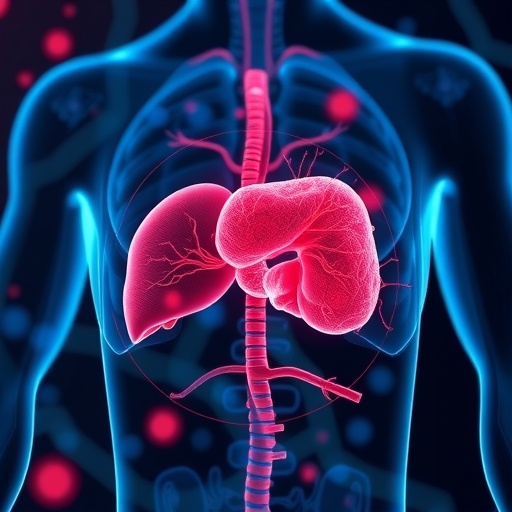In a world increasingly driven by technological innovations, the medical field is not left behind, especially in the area of liver disease diagnosis and prediction. A groundbreaking comprehensive review has emerged in Discover Artificial Intelligence, authored by R. Farahi and N. Derakhshanfard, which delves into the various methods leveraging smart technologies for diagnosing and predicting liver diseases. This document serves to shed light on the synergistic relationship between artificial intelligence and healthcare, particularly as it pertains to the liver, an organ crucial for overall health.
Liver diseases are among the leading causes of morbidity and mortality worldwide, making effective diagnosis and prediction methods paramount. Traditional methods, while useful, may not always provide the speed or accuracy required to identify conditions like hepatitis, cirrhosis, or liver cancer at their earliest stages. This inadequacy calls for innovative solutions that can process vast amounts of data rapidly and accurately, a task ideally suited for smart technologies. Farahi and Derakhshanfard’s work meticulously outlines the various advanced methodologies that are revolutionizing this critical healthcare sector.
Artificial intelligence systems, including machine learning and deep learning algorithms, have shown great promise in medical diagnostics. By applying these techniques to liver disease, researchers can potentially analyze electronic health records, laboratory results, and even imaging data. The most significant advantage comes from the capability of these systems to incorporate a diverse range of data types, providing insights that traditional analytical methods may overlook. This multifaceted analysis can yield patterns and correlations that are vital for accurate diagnostics.
Within their review, Farahi and Derakhshanfard discuss the application of predictive analytics as a cornerstone in managing liver diseases. Predictive analytics utilizes data mining, statistics, and machine learning to identify the likelihood of future outcomes based on historical data. For instance, by analyzing previous patient histories, predictive models can gauge the risk factors associated with liver disease progression. This proactive approach enables healthcare professionals to implement preventative measures tailored to individual patients, ultimately leading to improved health outcomes.
Moreover, the review emphasizes the increasing utility of non-invasive diagnostic techniques powered by smart methods. Traditional liver diagnostic procedures often require invasive biopsies, which can be painful and carry risks. On the other hand, advancements in imaging technologies, combined with artificial intelligence, have enabled the development of alternative, non-invasive methods that are not only safer but also more cost-effective. Techniques such as elastography and enhanced liver imaging utilize AI algorithms to interpret data from imaging devices, yielding accurate liver stiffness measurements—an essential metric for diagnosing fibrosis.
Additionally, the document highlights the significance of integrating multi-omics data to enhance diagnostic accuracy. By incorporating genomics, proteomics, and metabolomics alongside traditional clinical data, healthcare providers can gain a holistic view of a patient’s liver health. This integrative approach allows for more precise, personalized treatment plans while minimizing the trial-and-error nature associated with many traditional liver disease treatments.
In discussions surrounding technology, one cannot overlook the ethical implications and challenges that accompany such advancements. Farahi and Derakhshanfard address privacy concerns related to the handling of personal health data, emphasizing the necessity for robust data governance frameworks. The use of AI in healthcare must be coupled with stringent regulations to ensure patient confidentiality and data security, thereby fostering patient trust in these pioneering methodologies.
The review also provides a thorough examination of the limitations and future directions for research in this dynamic field. Despite the promising landscape of smart methods in liver disease diagnosis, challenges remain in terms of data quality and the generalizability of AI models across diverse populations. As more data is collected, there exists an enormous potential to refine these algorithms, improving their predictive capabilities over time.
As the authors navigate through the plethora of studies in this domain, it becomes evident that collaborative efforts among healthcare professionals, data scientists, and software engineers are crucial. Interdisciplinary collaboration can lead to the development of robust AI models capable of synthesizing clinical insights with technological advancements. Such partnerships will ultimately drive the evolutionary trajectory of liver disease diagnostics forward, establishing a new standard of care.
Further exploration of patient-centered AI tools that actively engage patients in their health management can revolutionize how liver health is perceived and managed. From mobile applications that track liver health markers to online platforms that provide personalized health education based on individual risk factors, the interplay between patient engagement and smart technologies can foster a more informed patient population. Future research must also explore how to effectively implement these tools in varied clinical settings, ensuring accessibility to all patients.
In conclusion, the comprehensive review by Farahi and Derakhshanfard serves as a pivotal resource, encapsulating the rapidly evolving intersection of technology and healthcare in the context of liver disease. The continued exploration of smart methods for diagnosing and predicting liver diseases can potentially lead to actionable insights that not only advance clinical practices but also provide hope for millions affected by liver conditions worldwide. As we stand at the threshold of a new era in medical diagnostics, the text paves the way for further inquiry, collaboration, and innovation in the quest for effective liver health management.
The integration of smart technologies into the diagnostic landscape of liver diseases is just the beginning. As researchers and clinicians continue to uncover the potential of AI and machine learning, the horizon for liver disease treatment and management is bright.
With this extensive overview, Farahi and Derakhshanfard’s review resonates beyond academia, prompting a broader discussion about the future of healthcare and the vital importance of adopting cutting-edge technology for improved patient outcomes.
Subject of Research: Methods of Diagnosing and Predicting Liver Diseases Using Smart Methods
Article Title: A comprehensive review of the methods of diagnosing and predicting liver diseases using smart methods.
Article References:
Farahi, R., Derakhshanfard, N. A comprehensive review of the methods of diagnosing and predicting liver diseases using smart methods.
Discov Artif Intell 5, 230 (2025). https://doi.org/10.1007/s44163-025-00483-7
Image Credits: AI Generated
DOI: 10.1007/s44163-025-00483-7
Keywords: Artificial Intelligence, Liver Diseases, Machine Learning, Predictive Analytics, Non-invasive Diagnostics, Multi-omics Data, Patient Engagement, Healthcare Innovation.




